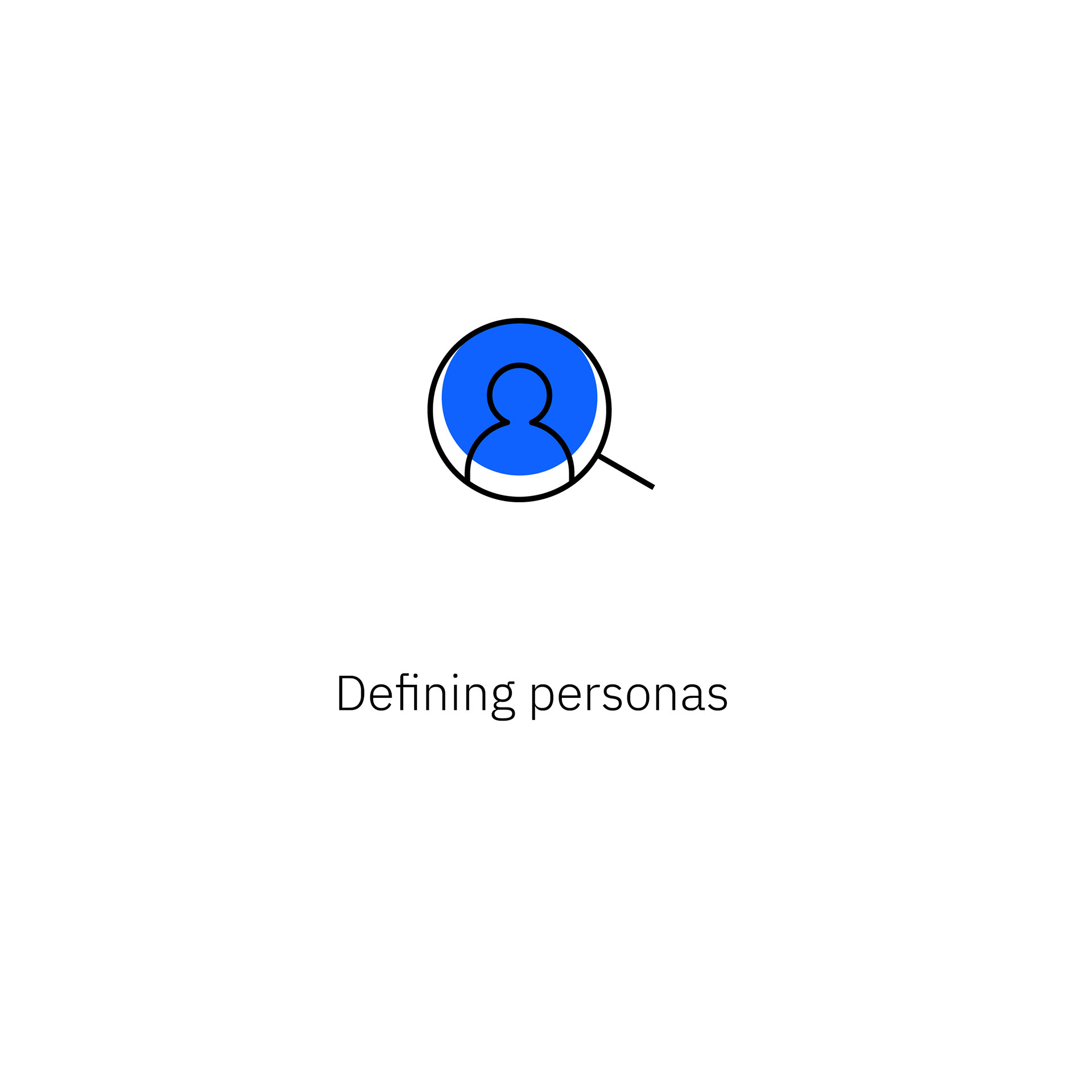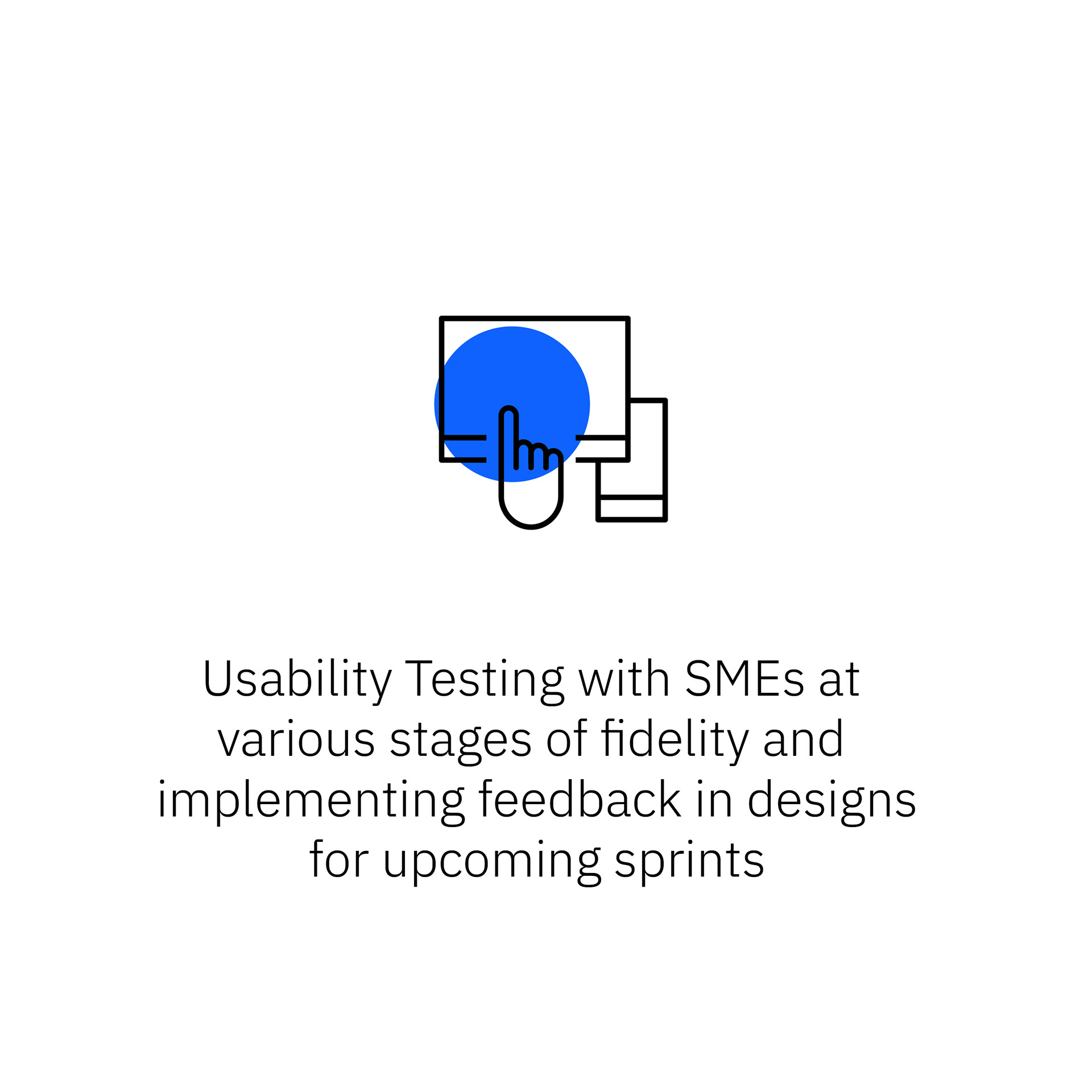I led the design and research for Medicaid Program Insights and mentored a Junior UX Designer on my team.












Key personas were established when I began work on the project but my research activities helped to inform them further. I undertook discovery interviews with Customers and SMEs to validate personas and ensure they were relevant.
Three customers were involved in these individual sessions which enabled me to validate existing personas, understand users further and discover any additional pain points. I transcribed the interviews and performed a content analysis of the script highlight areas of interest and key needs.
I performed a card sorting exercise to organise the common themes and responses in the customers answers and find actionable insights and needs.
I led workshops in Mural with Subject Matter Experts, Product Management, and the Business Team to map out the As-Is Scenario for the Medicaid Program Manager, identify pain points and vote on Sue's objectives and success metrics.
I iterated the mural As-Is into a consolidated As-Is based on the use of Emergency Rooms reports. Key pain points from the workshop were highlighted and linked to their relevant Hills.
Working with Product Management and the Business team I crafted Hills (project outcomes) to best address Sue's needs and pain points alongside a cake experience product roadmap. Hill 2 and 3 addressed areas of dashboard customisation, natural language processing, and opportunity and change detection.
For the To-Be Scenario I led workshops in Mural with Subject Matter Experts, Product Management and the Business Team to map out the To-Be Scenario for the Medicaid Program Team. I iterated the To-Be as a consolidated story for playback to senior management.
I led workshops with SMEs to understand the persona's ways of working, how content should be organised and what the persona would want to investigate and see.
Workshops consisted of Card Sorting activities with 5 SMEs, Product Management and Business to gain an understanding of the personas mental model with additional cards added as SMEs identified them.
The exercise enabled the clustering of common dashboard themes and the building of the Information Architecture for the product. It enabled the team to understand what the persona might expect to see and how to structure architecture, from login to linear navigation to drill through or down.
Working with Business and Product Management I defined the data visualisation requirements which enabled me to layout and design the dashboards at various levels of fidelity. Using the Packaged Data Analytics framework I had established, I crafted visualisations from concept to high fidelity mapping the visualisations from the persona mental model, business objectives, questions, available data sources, and industry-standard measures and metrics.
Lo-fidelity designs were quickly built with available toolkits. Charts were blocked out at this stage with suggested chart concepts and validated with SMEs for value. Layout, navigation, measures and charts were all validated with the SMEs and Product Management at each stage of the design.
I conducted AB tests with 5 SMEs remotely to understand the values in the layout and navigation based on Information Architecture to improve the experience for the customer. The A and B of the test involved dropdown vs tab navigation for primary content and an iterated layout of dashboard content.
I handed control of a prototype to the SMEs via Invision and asked them to navigate to the dashboards. I walked them through the prototype and asked them questions about their experience as they navigated.
The research resulted in a preference for and the adoption of a dropdown main navigation over the original tabbed main navigation and the use of tabs for sections within a dashboard.
Hifi designs were based on the IBM Carbon Design System which I adapted and tested for accessibility. I created a chart and pattern library alongside a set of design guidelines for Watson Health products that are built with Cognos Reports and Cognos Dashboards to ensure a cohesive UX UI experience across the product suite. I oversaw the work of the Junior UX designer updating the guidelines and components and contributing them to the Watson Health pattern library.
IBM drives a mobile first approach across all of it products and for MPI I followed this approach. Research with SMEs and Customers validated that mobile would not be a device used by our persona and so for build mobile designs were not fulfilled. I designed accessible versions of every dashboard in a tabulated format so that screenreader and JAWS could read them in the background, Cognos did not provide accessible dashboards and it was a requirement for our state customers.
Some of the iterations of the hi fidelity designs that began as an MVP build. A regular cadence with SMEs was held every 1/2 weeks to review the designs for upcoming sprints. A pool of 5 SMEs was referred to with individual calls for focussed feedback. SMEs were located in the US and had worked in Medicaid in previous roles.
I established engagement with a state customer for ongoing feedback and user testing. In order to peak interest with the customer for feedback engagement, I held an introduction session to ignite interest in a regular cadence. The initial call had 50 customers online where I presented a pitch deck, introduction to team and MPI and a walkthrough of the product. I offered customers a personal stake in the success of our product and the opportunity to work alongside the product team as active participants. From that recruitment session I was able to recruit a number of participants for future sessions.
In one round of those user feedback sessions with 3 participants, the participants were given control of the prototype and I asked them to explore and provide feedback. A freeform test was used where each customer navigated towards reports of greatest interest and opportunity.
The testing provided Key findings and feedback that validated areas of the design while providing items to address in the product backlog.
I worked with development in 2 week sprints in an agile environment with daily stand ups. I worked with engineers to create POCs for navigation and visualisations. Responsiveness was designed and POC tested at various screen sizes. For Accessibility dashboards required separate table designs to be designed and built in Cognos to allow for an accessible view which I collaborated with engineers on to deliver.
